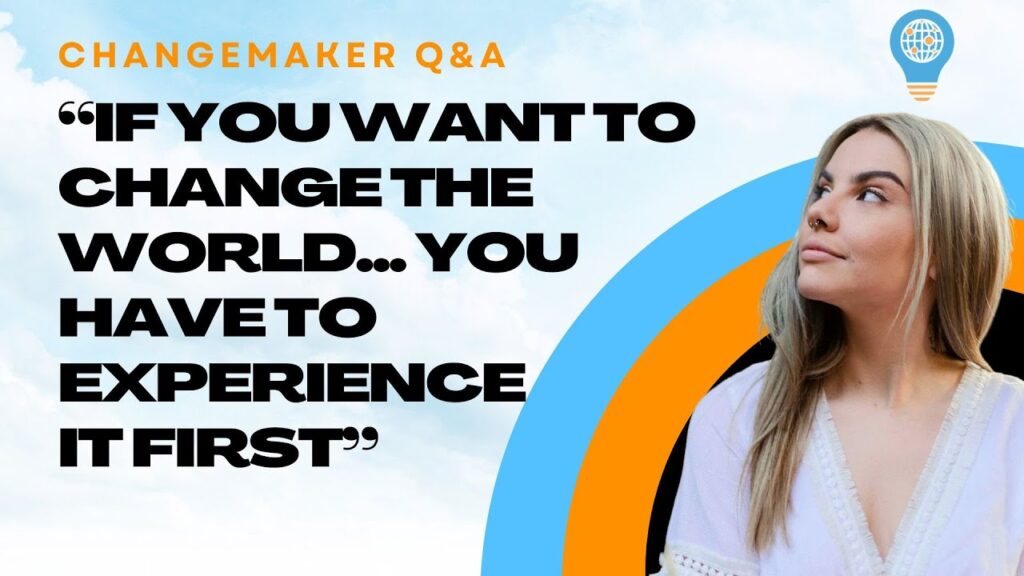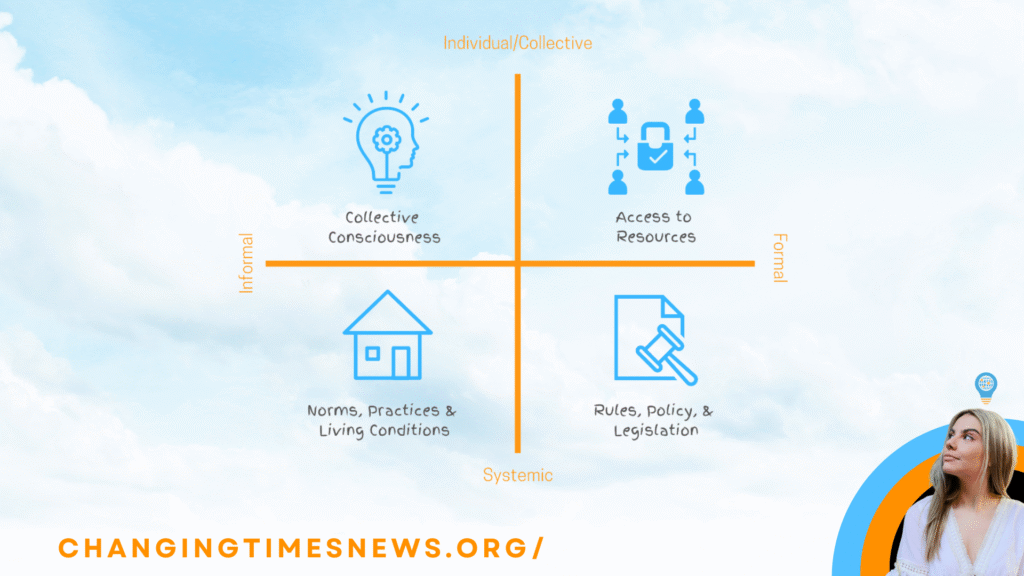Is peace really something that begins from within, or is it forged in the compromises, treaties, and negotiations that define our outer world? In the latest episode of Changemaker Q&A, host Tiyana J dives into this age-old question through a practical lens—examining not only conflict itself, but the deeper dynamics of collusion that often sustain it, inspired by the framework put forth in the Arbinger Institute’s book, The Anatomy of Peace.
Beyond the Absence of War
When we think of peace, the image that comes most readily to mind is the absence of war. Yet as Tiyana notes, conflict manifests in many ways—interpersonal disputes, cultural clashes, political deadlocks, and systemic injustices. In this sense, “the opposite of peace is conflict,” she says, reminding listeners that no level of society is free from it.
Research supports this broader framing. The Institute for Economics & Peace, in its 2024 Global Peace Index, observes that while large-scale wars draw global attention, “everyday conflicts” within communities and institutions also undermine stability and human security (IEP report).
Collusion: The Hidden Driver
What sets this episode apart is its focus on collusion—a concept that goes deeper than surface-level conflict. Collusion occurs when opposing sides unconsciously reinforce one another’s behavior, creating a cycle of hostility and justification.
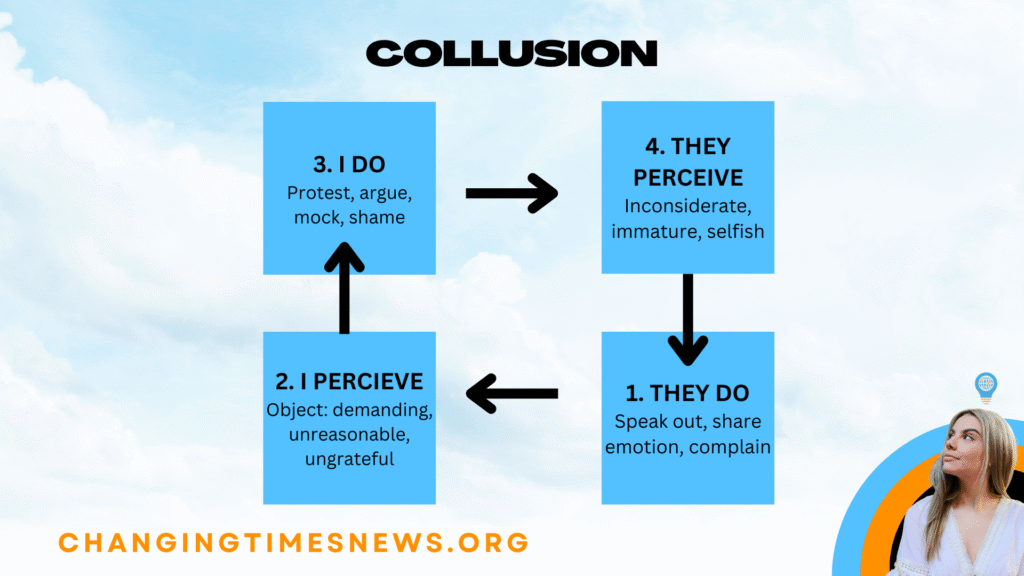
For example, one party perceives disrespect and responds with hostility, which in turn invites more disrespect. Over time, both sides entrench themselves in self-righteousness, each convinced of their own correctness. As Tiyana explains, “the energy spent sustaining these conflicts diverts the focus from achieving any meaningful goals.”
This perspective is central to the Anatomy of Peace: that resolving conflict requires addressing the “way of being” behind our actions.
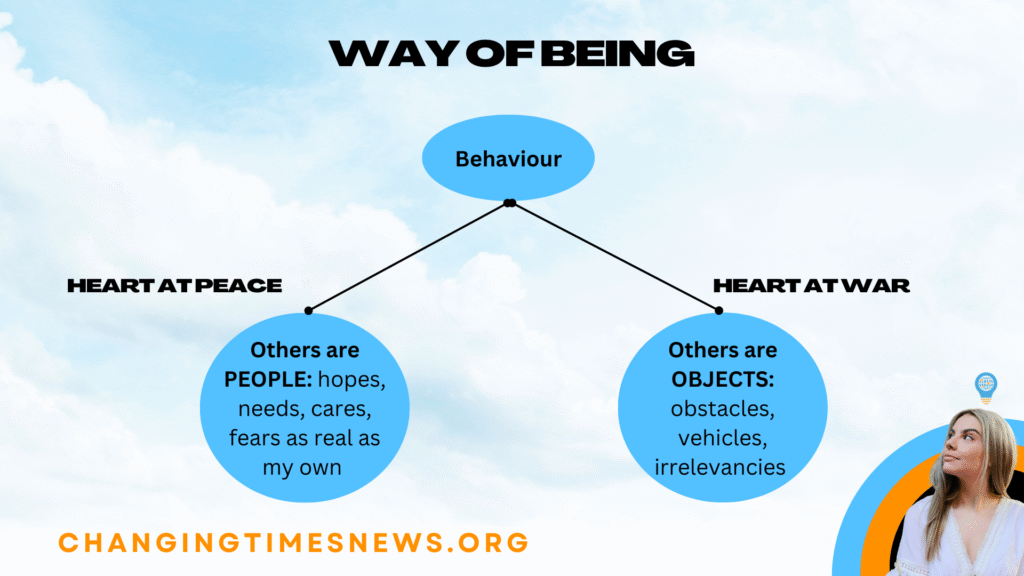
The Four Boxes: Distorted Ways of Seeing
To unpack this “way of being,” the episode outlines four psychological frameworks—often referred to as the boxes. Each describes a distorted mindset that traps us in cycles of conflict:
- The “Better Than” Box: seeing oneself as superior and others as inferior, leading to impatience and disdain.
- The “I Deserve” Box: viewing oneself as mistreated or unappreciated, fostering entitlement and resentment.
- The “Must Be Seen As” Box: being preoccupied with image and judgment, creating anxiety and defensiveness.
- The “Worse Than” Box: perceiving oneself as inadequate compared to others, feeding helplessness and jealousy.
Once inside these boxes, people tend to justify their own actions while dehumanizing others—seeing them as obstacles or tools rather than as full human beings. This mindset, Tiyana emphasizes, is at the heart of collusion.
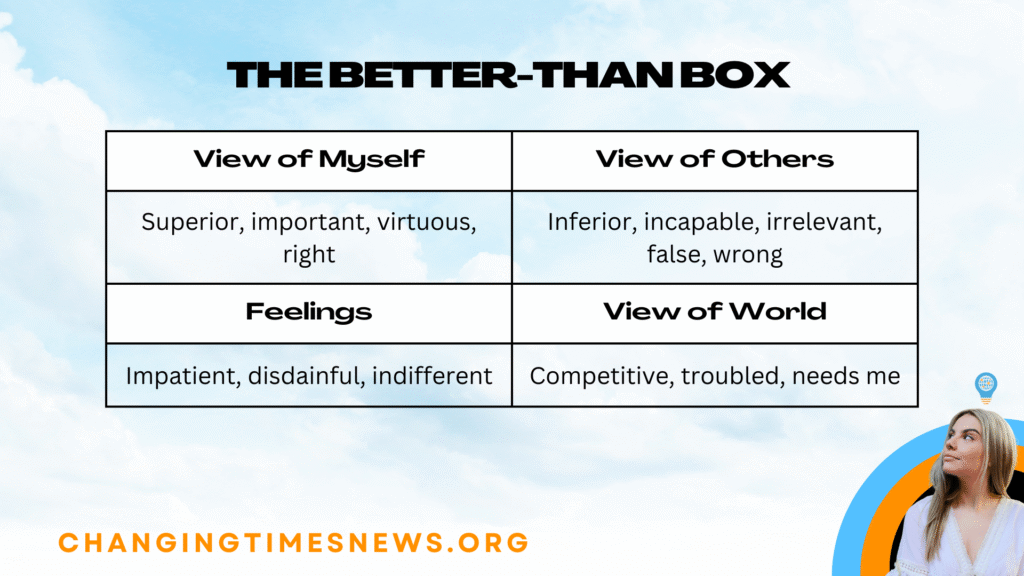
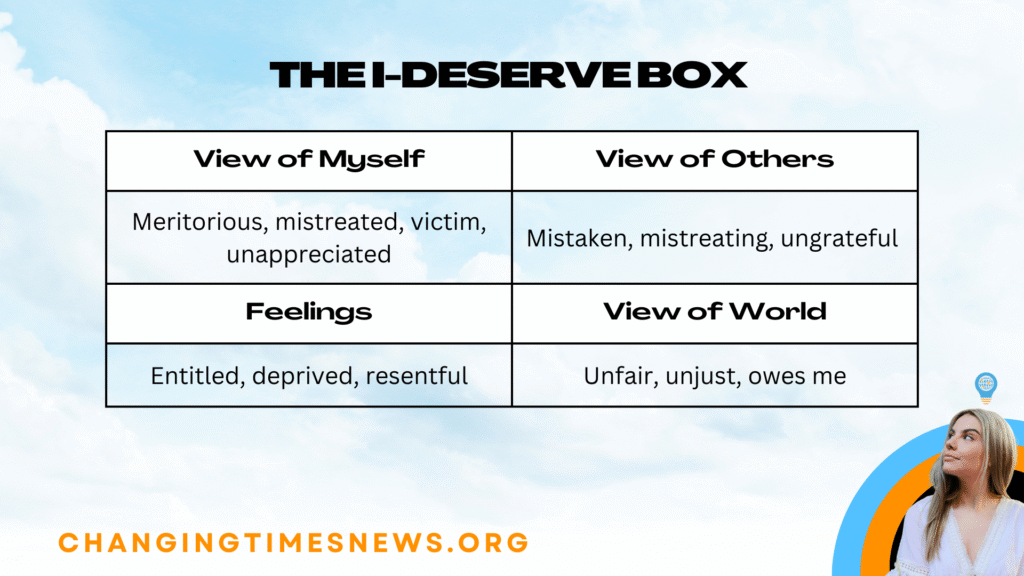

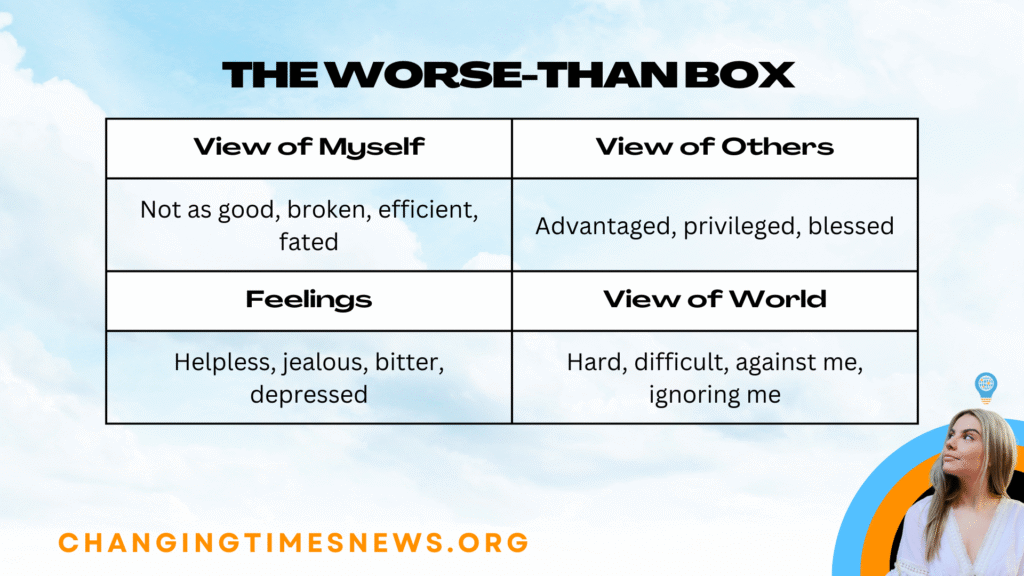
The Peace Pyramid: Building From the Bottom Up
The Change Pyramid represents how we typically deal with change: focusing most of our effort at the top, daeling with things going wrong.
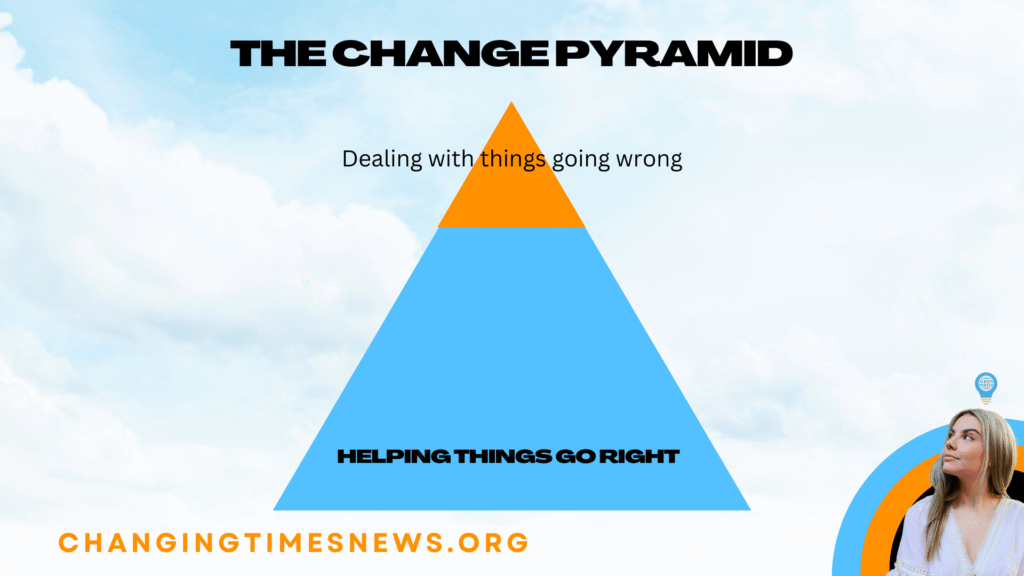
Alongside the boxes, Tiyana introduces another framework: the peace pyramid (sometimes referred to as the change pyramid). It reframes conflict resolution as a layered process, where most of the real work happens at the base.
At the very bottom lies the foundation—obtaining a “heart of peace,” or a genuine state of inner clarity. From there, the pyramid builds upward:
- Cultivating genuine relationships with others, rooted in respect rather than objectification.
- Listening and learning, approaching others with humility rather than defensiveness.
- Teaching and communicating, once trust has been established.
- Correcting what’s going wrong—the visible tip of the pyramid, but only effective if the lower layers are intact.
This framework serves as a reminder that lasting peace cannot be built on quick fixes or reactive strategies. As peace theorist Johan Galtung has long argued, addressing surface-level violence without changing the underlying structures and attitudes will never resolve the deeper conflict (Galtung’s conflict theory).
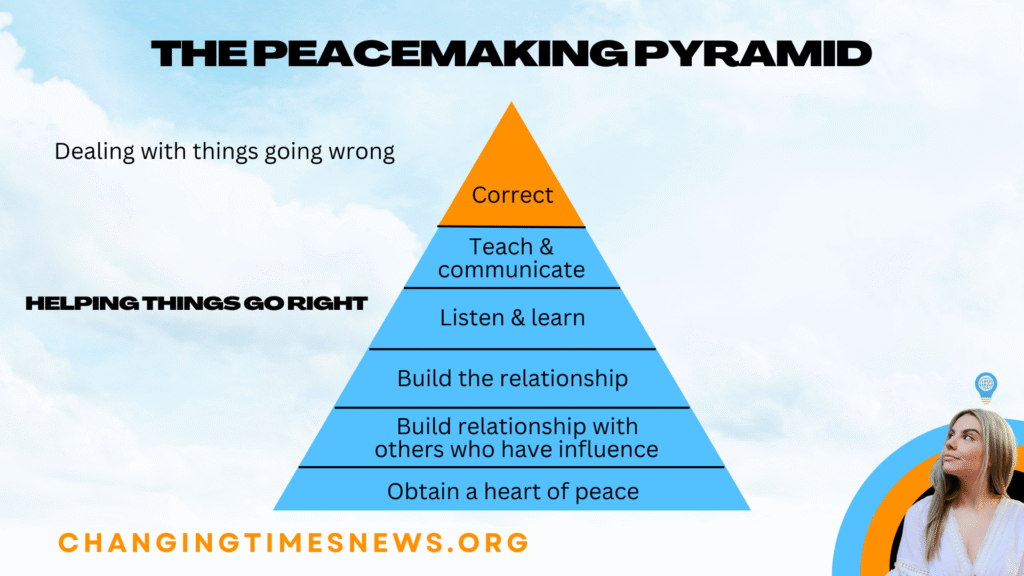
Lessons for Changemakers
Three key takeaways emerge from the episode:
- Most of our energy must go to the base of the pyramid—cultivating inner peace and genuine relationships—rather than firefighting crises.
- Solutions to conflict lie at deeper levels than where the conflict first appears. Addressing behaviors without addressing mindsets only perpetuates cycles.
- Effectiveness depends on our way of being—whether we see others as people or as objects.
These lessons are not easy. As Tiyana acknowledges, much of changemaking work is grueling, underfunded, and often reactive. Yet without this deeper foundation, attempts at change risk collapsing under the weight of unresolved collusion.

A Call for Reflection
In closing, the episode challenges listeners to reflect on their own role in sustaining cycles of conflict, whether in their families, workplaces, or activist movements. “We cannot be agents of peace until our own hearts are at peace,” Tiyana emphasizes.
That reminder feels particularly urgent at a time when global conflict is rising and trust in institutions is eroding. Peacebuilding may start with systems, treaties, and reforms—but as this conversation makes clear, it also begins with the smallest of shifts in how we see, regard, and respond to one another.
For those ready to explore further, the Arbinger Institute’s The Anatomy of Peace remains a key text. And for a sobering global overview of conflict and peace trends, the annual Global Peace Index offers essential data.
Because, as Tiyana concludes, “the outward wars we see going on around us are just reflections of the inward wars that are going left unnoticed.”

